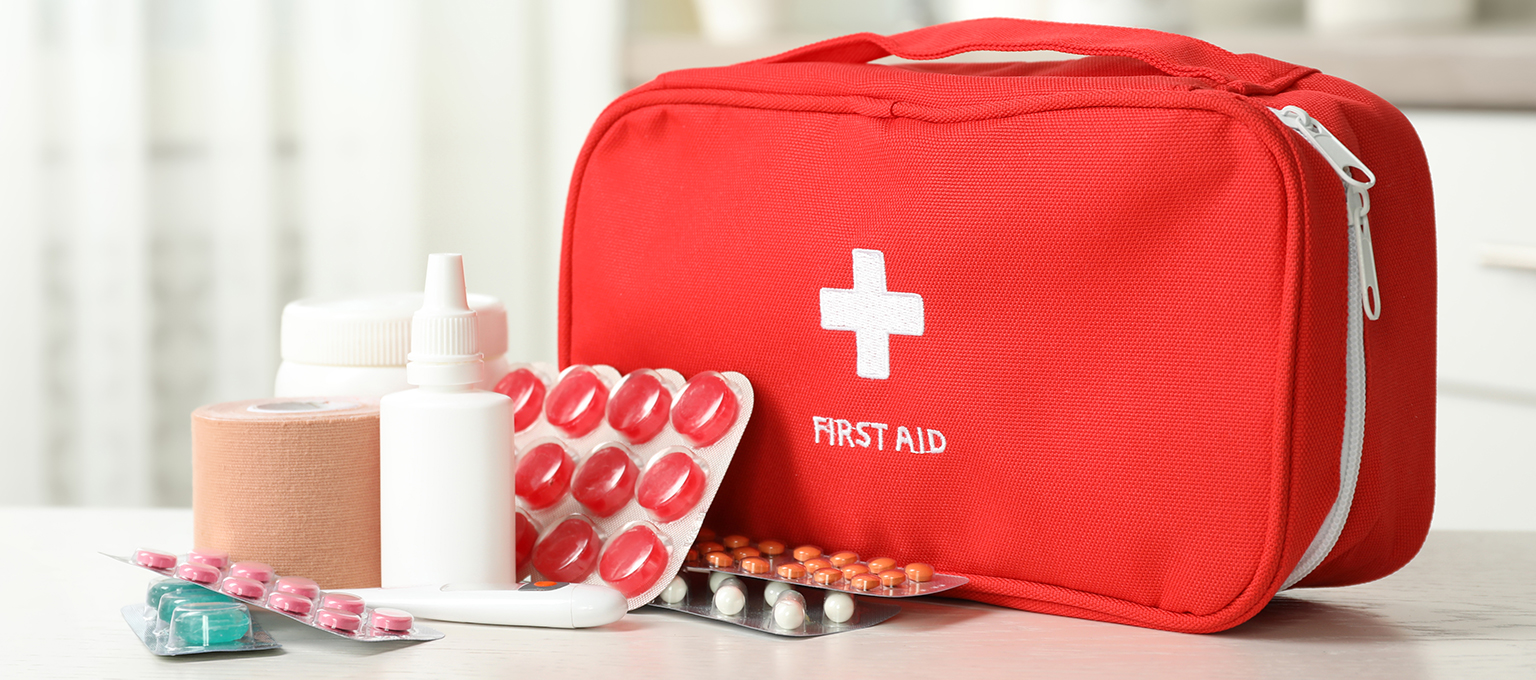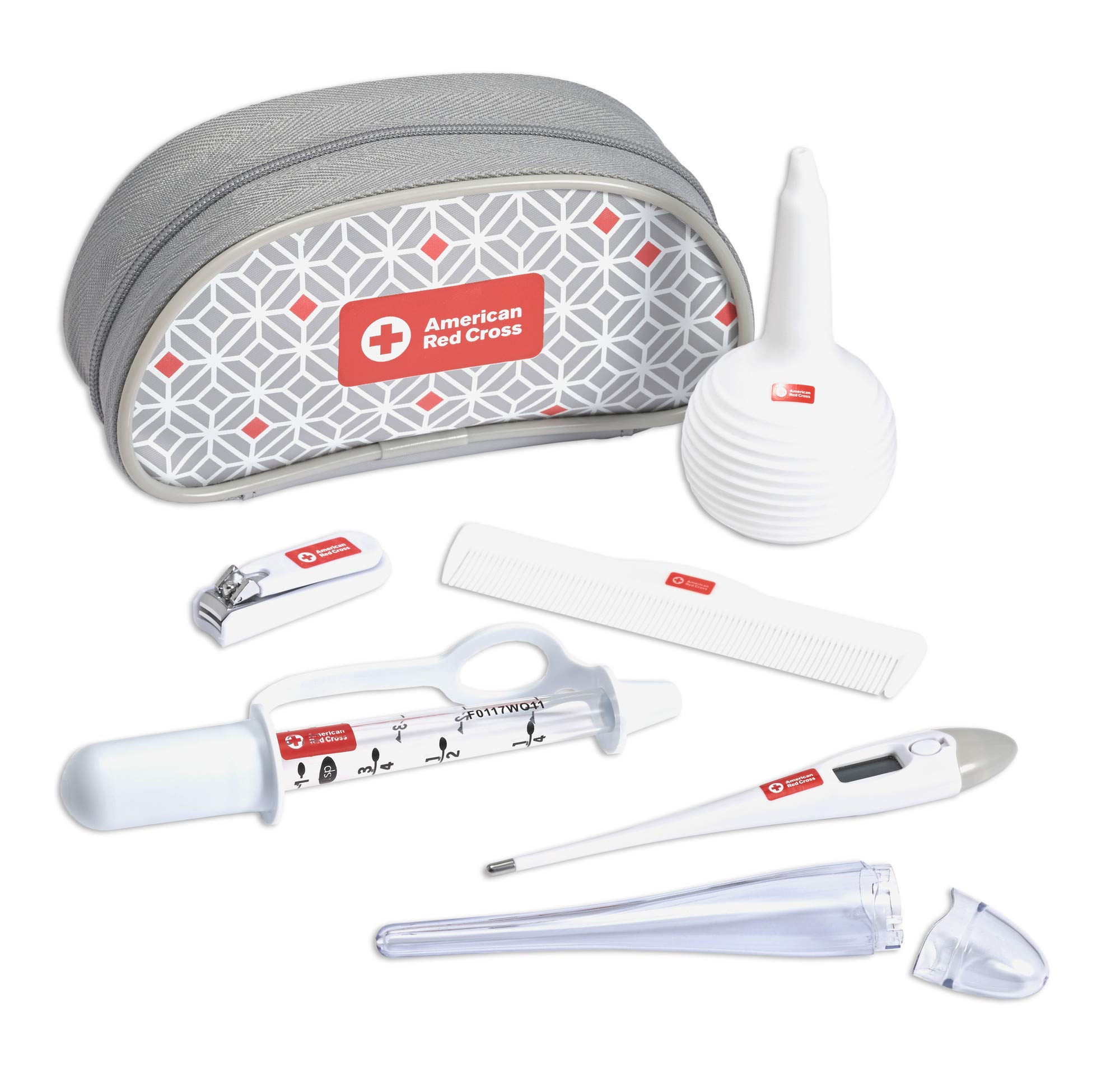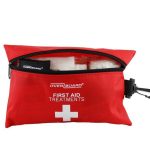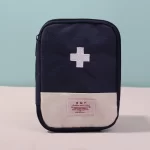I. Introduction

A. Importance of having an infant first aid kit
Having an infant first aid kit is crucial for any parent or caregiver. Infants are more susceptible to accidents and illnesses due to their fragile immune systems and lack of coordination. Having a well-stocked first aid kit specifically tailored for infants can help provide immediate care and potentially prevent further complications or emergencies. This article aims to provide guidance on assembling an effective infant first aid kit.
II. What to Consider When Building an Infant First Aid Kit
A. Essential items for common infant injuries and illnesses
- Bandages and dressings
Bandages and dressings are essential for covering wounds and stopping bleeding. It is important to have a variety of sizes and materials such as adhesive bandages, gauze pads, and adhesive tape. These can be used for small cuts, scrapes, or burns.
- Antiseptic ointments and creams
Antiseptic ointments or creams help prevent infection in wounds. Look for ones specifically formulated for infants to ensure they are safe and gentle on their delicate skin. Examples include antibiotic ointment and antiseptic creams.
- Thermometer
A reliable thermometer is essential for monitoring an infant’s body temperature. Digital thermometers are commonly used for their accuracy and ease of use. It is advised to have a rectal thermometer for infants, as it provides the most accurate temperature reading.
- Saline solution for nasal congestion
Infants are prone to nasal congestion, which can make breathing difficult. Saline solution helps loosen mucus and relieve congestion. It is available in spray or drop forms and is safe for infants.

- Infant pain reliever
Infants may experience discomfort or pain from teething, fevers, or minor injuries. It is important to have a pain reliever specifically formulated for infants, such as acetaminophen or ibuprofen, and to follow the recommended dosage based on their age and weight.
- Oral rehydration solution
In cases of vomiting or diarrhea, infants are at risk of dehydration. Oral rehydration solution helps replenish lost fluids and electrolytes. It is essential to have the appropriate solution for infants readily available in the first aid kit.
- Medicine dropper or syringe
A medicine dropper or syringe is necessary for measuring and administering medication to infants. Ensure that it is clean and sterile when using to avoid contaminating the medication.
B. Additional items for specific situations or needs
- Infant CPR mask
In case of a cardiac arrest or respiratory emergency, an infant CPR mask can provide a barrier between the caregiver’s mouth and the infant, reducing the risk of infection. It is recommended for anyone caring for an infant to learn infant CPR and have a mask in their first aid kit.
- Emergency contact information
Include a card or paper with emergency contact numbers, including 911, the poison control center, and the child’s pediatrician. This information should be easily accessible and visible in the first aid kit.
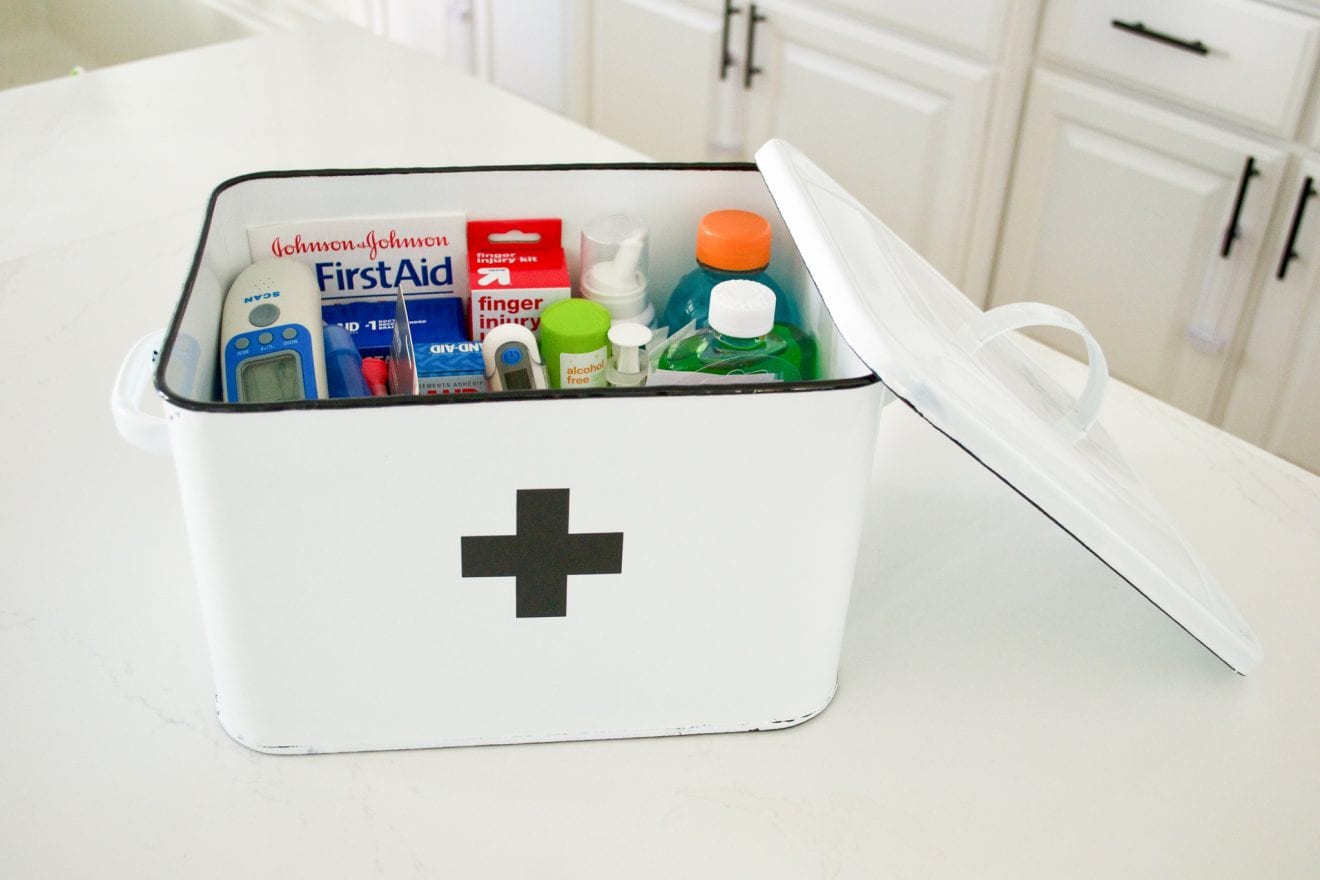
- Teething gel or rings
Teething can cause discomfort and pain in infants. Teething gels or rings can provide temporary relief. Look for teething products that are free from harmful chemicals and choking hazards.
- Diaper rash cream
Diaper rash is a common issue in infants. Having a diaper rash cream in the first aid kit can soothe and protect the baby’s skin. Look for creams with gentle, hypoallergenic ingredients.
- Sunscreen for infants
Infants have delicate skin that is highly prone to sunburn. It is important to protect them from harmful UV rays with a sunscreen specifically formulated for infants. Look for a broad-spectrum sunscreen with a high SPF and hypoallergenic ingredients.
III. Tips for Organizing and Maintaining an Infant First Aid Kit
A. Proper storage and accessibility
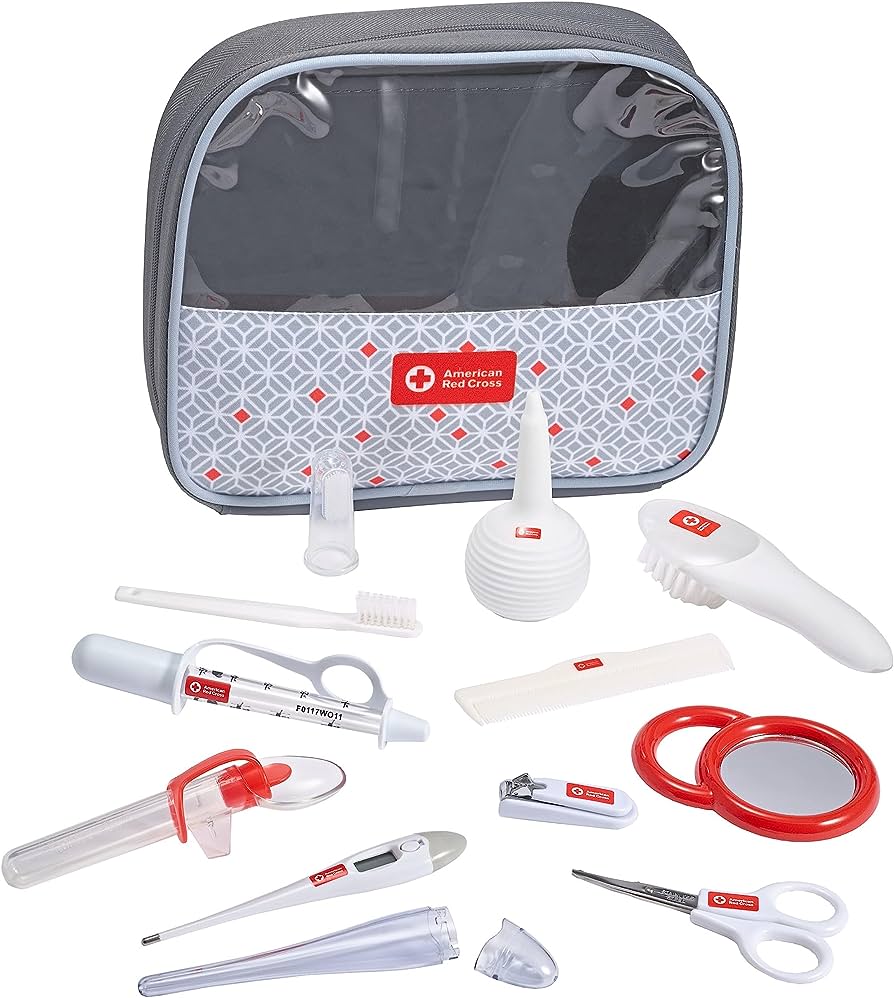
When it comes to organizing and maintaining an infant first aid kit, proper storage and accessibility are key. You want to make sure that the kit is easily accessible in case of emergencies, but also stored in a safe and secure location to prevent any accidents or misuse.
- Choose a sturdy container: Start by selecting a sturdy container for your infant first aid kit. A plastic container with a secure lid or a small first aid bag works well. Make sure the container is large enough to hold all the necessary supplies, but still portable and easy to store.
- Keep it in a designated area: Find a designated area in your home where you can keep the infant first aid kit. This can be in a kitchen cabinet, bathroom closet, or any other easily accessible area. The key is to have it in a central location that can be reached quickly in case of an emergency.
- Store it out of reach from children: While it’s important to have the first aid kit easily accessible, it’s equally important to store it out of reach from children. Keep it in a high cabinet or a locked drawer to prevent little hands from getting into it and potentially causing harm.
B. Regular inventory checks and expiration date management
Just like any other medical supplies, the items in your infant first aid kit have expiration dates. It’s crucial to regularly check and replace any expired items to ensure that your kit is always ready for use. Additionally, conducting regular inventory checks will help you identify any missing or low stock items that need to be replenished.
- Set a reminder system: One way to stay on top of expiration dates is to set a reminder system. Use your phone or a calendar app to mark down the expiration dates of the items in your first aid kit. Set reminders a few weeks in advance to give yourself enough time to reorder and replace any expiring supplies.
- Rotate and replace items as needed: Every few months, go through your first aid kit and check the expiration dates on each item. Remove any expired items and replace them with new ones. This ensures that your kit is stocked with fresh and effective supplies.
- Keep a checklist: Maintain a checklist of all the items in your infant first aid kit. This will help you keep track of what you have and what needs to be replaced. It’s also a handy reference in case of an emergency when you might be under stress and need a quick reminder of what supplies you have available.
C. Recommended locations for keeping the kit
While it’s important to find a central and accessible location for your infant first aid kit, there are specific locations that are recommended for keeping the kit. These locations are chosen based on ease of access and suitability for medical emergencies involving infants.
- Kitchen cabinet: The kitchen is often the heart of a home and a place where parents spend a significant amount of time. Keeping the infant first aid kit in a kitchen cabinet ensures easy access in case of accidents, such as burns or choking incidents.
- Bathroom closet: Another recommended location for the infant first aid kit is a bathroom closet. Bathrooms are often equipped with supplies like bandages and disinfectants, making it an ideal location for quick access to first aid items.
- Bedroom or nursery: For parents who spend a lot of time in their child’s bedroom or nursery, keeping the infant first aid kit in this area can be practical. It provides easy access during nighttime emergencies, such as fevers or sudden illnesses.
In conclusion, organizing and maintaining an infant first aid kit requires proper storage, regular inventory checks, and understanding the recommended locations for keeping the kit. Additionally, educating yourself on infant first aid is of paramount importance, whether through online resources, courses, or consulting with healthcare professionals. With the right knowledge and preparedness, parents and caregivers can ensure the safety and well-being of their infants in emergency situations.
